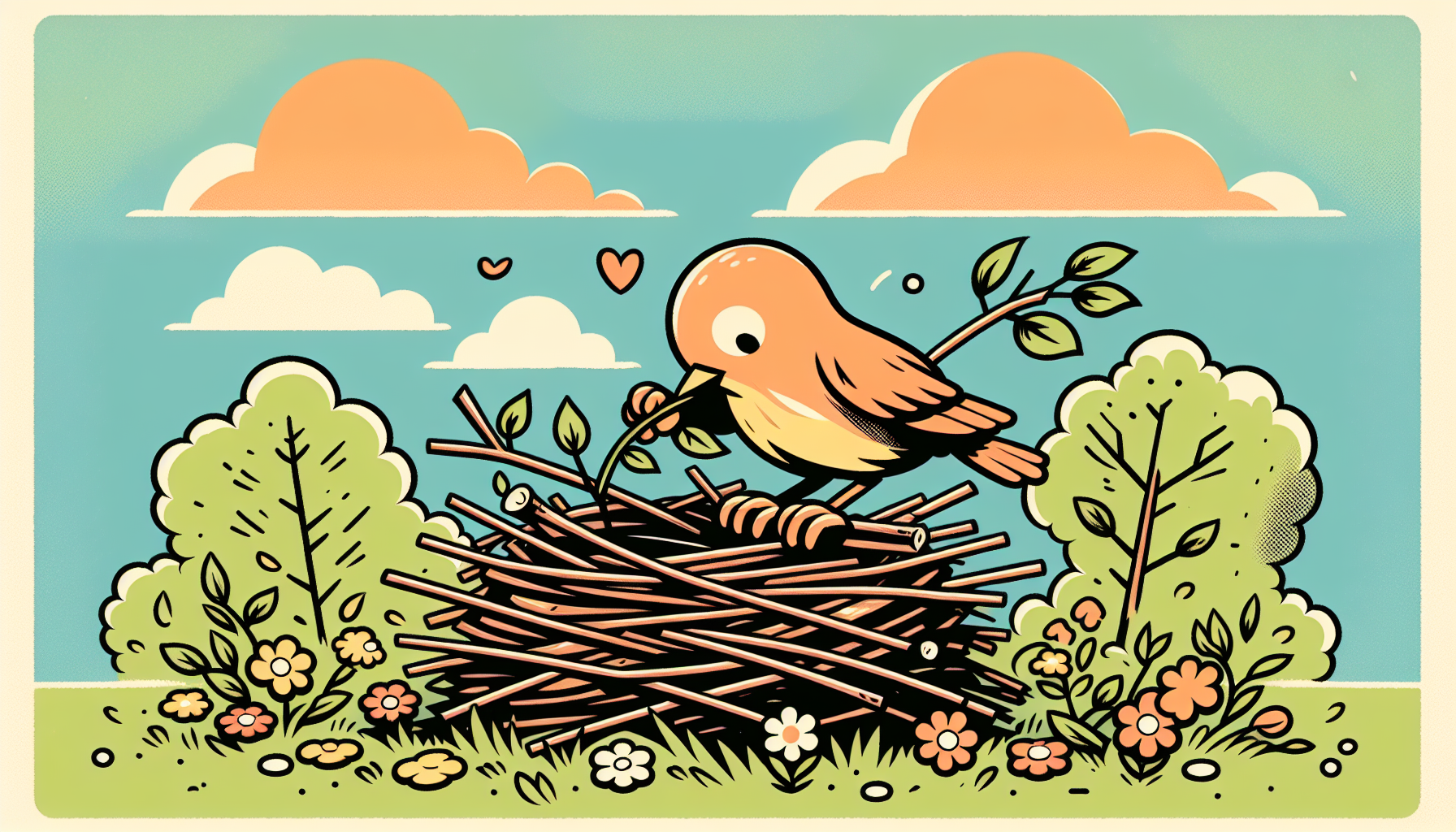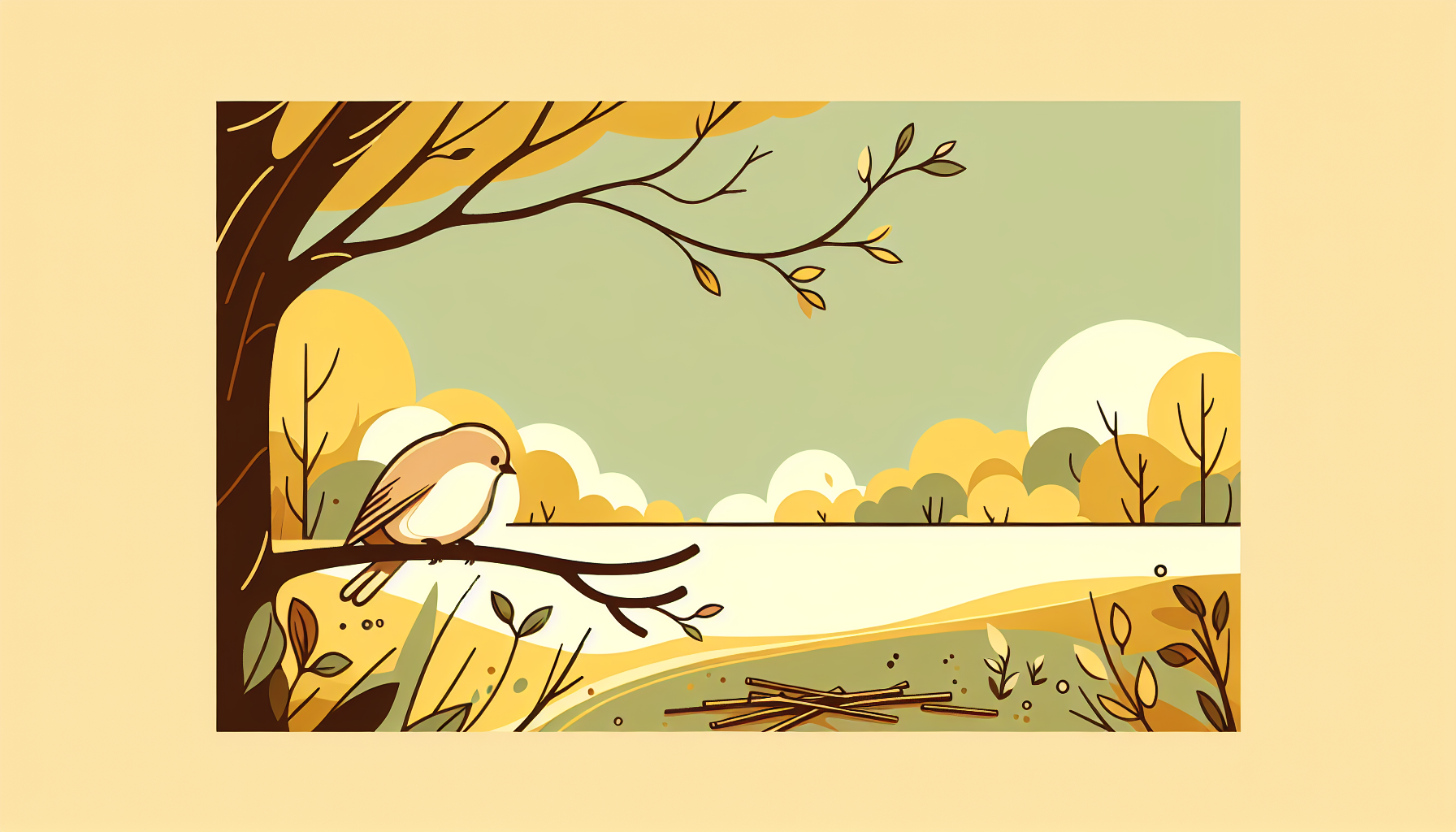
How birds establish their territory
How do birds organize their territories - this question is one of the central topics of birdwatching. A territory is more than just a random area: it is a breeding ground, pantry, communication space and stage for courtship and song. From the blackbird in the city garden to the robin at the edge of the forest, species use different signals to define and defend boundaries. The following article explains in detail how territorial behavior develops, which factors determine territory size and how territorial structures can be observed and promoted in your own garden - including practical examples, seasonal orientation and observation tips using modern camera technology.
TL;DR - The most important facts in brief
- A bird territory provides a breeding site, food and rest. It is marked by song, flight paths, sightings and direct defense.
- Territory size varies depending on the species, habitat and season (orientation values): from a very small core area to areas of approx. 0.5 ha and more.
- Urban territories are often smaller and mosaic-like; noise and light influence singing times and boundaries.
- Garden structures such as hedges, shrubs, dead wood and water-bearing bowls stabilize territories and reduce conflicts.
- Cameras on feeders or nesting boxes with AI bird recognition facilitate the collection of evidence: visitors, times and interactions are objectively documented.
What exactly does "territory" mean for birds?

A territory is the section of habitat defended by an individual or pair against conspecifics. It typically comprises a core area (breeding site, preferred perches, safe cover) and an extended area (feeding areas, waterholes, alternative nesting sites). Territoriality serves to secure resources and avoid conflict: clear boundaries minimize constant disputes. Territorial boundaries are rarely "visible", but are stabilized by acoustic and visual signals, regular patrols and selective conflicts.
From an ecological point of view, the territory balances the density of a species with habitat quality: in food-rich gardens, territories are smaller, while nutrient-poor areas require larger areas. Individual condition, experience and site fidelity also influence how narrow or wide a bird establishes and defends its territory.
How do birds establish their territory? Signals, strategies and typical processes
Acoustic boundary posts: territorial song and calls
Territorial song is the central instrument of demarcation. Males place themselves on raised perches - roof ridges, fences, hedge tops - and mark the perimeter of their territory by singing. An antiphonal song with neighbors often follows at boundary lines: call-response sequences define distance and ownership. In noisy environments (traffic, city noise), many species shift their singing times to the early hours of the morning or increase the volume of their song to ensure the signaling effect.
Visual signals: flight routes, threatening gestures, pursuits
In addition to singing, short patrol flights structure the boundary lines. Typical are "fence-to-fence" flights in which perches are systematically approached. Intruders are driven away by posture (erect plumage, open bill), deep calls and short pursuits. During the breeding season, brood protection increases the intensity of such actions, especially against nest-threatening rivals and predators.
Core area and edge zone: how borders "migrate"
Territory boundaries are dynamic. If food sources move, hedges grow back or areas are reshaped, the territory holder adapts its pattern. The core area usually remains stable around the nesting site, while the peripheral zone "breathes" with seasonal resources. Neighborhoods often establish stable boundaries that are taken up again in subsequent years (site fidelity).
Practical relevance: A camera at the feeder or nest box with AI bird recognition objectively documents territory visits. Times, recurring individuals and interactions at the boundary are automatically recorded - ideal for recognizing song breaks, activity windows and typical patrols without being permanently present.
What factors determine territory size?
Orientation values for territory sizes of common species
The following figures are typical sizes and serve as orientation values. Local variations are normal and depend on food, cover and competition.
How do birds establish their territory in the garden? Practical tips
Gardens offer a mosaic of hedges, beds, lawns and trees. Territorial species establish preferred perches (fence post, branch fork, roof edge) and recurring routes between food sources, water and cover. Structurally rich planting creates clear "spaces" that stabilize territorial boundaries and reduce conflicts. Important here are nesting sites, short escape routes and quiet corners without constant disturbance.
- 1 Plant hedges and shrubs in tiers (ground to canopy layer). This promotes cover, perches and insect diversity - the basis of stable territory cores.
- 2 Leave piles of dead wood and leaves as microhabitats. They provide food and retreats and shift territory boundaries away from exposed areas.
- 3 Offer water (bird bath) within sight of cover. Clean regularly to minimize disease transmission.
- 4 Place nesting boxes appropriately (direction of entry, height, distance). A nest box with a camera makes it possible to observe the development of territories from nest building to fledging.
- 5 Create decentralized feeding stations to eliminate competition. A bird feeder with camera automatically recognizes visitors via AI and shows at which times territorial boundaries are most challenged.
Challenge: Frequent territorial fights at the feeder increase stress and energy consumption. Solution: Several small feeding points with visual barriers (hedge sections), separate different feed types spatially, stagger drinking troughs and perches.
City vs. countryside: How do territories differ?
In urban areas, territories are often smaller and irregularly shaped. Buildings, courtyards and roads create islands of resources that are connected by narrow corridors. Noise pollution shifts the main singing time to the morning and twilight hours, and artificial light can lead to extended activity windows. In the countryside, on the other hand, territories are more extensive and follow hedge lines, forest edges or bodies of water, whereby large-scale monocultures have an unfavorable influence on territory size and shape.
Observation tip: AI-supported cameras at two feeding sites (front and back garden) show whether the same individuals use both sites. When traffic density is high, "micro-territories" often form around quieter courtyards - the recordings make these usage patterns visible.
Seasonal sequence: From the establishment of territories to their dissolution
Most resident birds start singing territories in late winter to early spring. In March/April, the demarcation intensifies, nest sites are fixed and pair bonds are strengthened. During the breeding season, activity is restricted to the core area, while feeding flights rhythmize the surroundings. After fledging and moulting, territoriality loosens; in late summer/autumn, territories are partly abandoned or converted into winter territories.
Case study: A pair of blackbirds in a terraced house garden

In a 200 m² garden, a male blackbird establishes a territory with a core area around a dense hedge in March. The daily Patrols follow fence line, tool shed and pear tree. A bird feeder with a camera records that most of the activity takes place shortly after sunrise; the AI bird detection also identifies a competing male that briefly intrudes in the evening. After several singing duels, the neighbouring bird shifts its route - the territorial boundary stabilizes. A nesting box with a camera later documents feeding intervals and resting phases without disturbing the brood.
Common misunderstandings about territorial behavior
- "Territory = large area": What matters is the defended core area, not the absolute area.
- "Only males are territorial": In many species, females are actively involved in defense, especially near the nest.
- "Singing = always mate courtship": Singing serves both to demarcate territory and to communicate with neighbors.
- "Feeding sites only cause arguments": Properly placed and equalized, they reduce conflicts and allow valuable observations.
Advantages at a glance: Camera-supported feeders and nest boxes provide objective time series, automated species identification and evidence photos for territorial events - a benefit for family-friendly nature education and for advanced observers.
Conclusion: How do birds establish their territories - and what does this mean for the garden?
Birds establish their territories through a finely tuned interplay of song, visual signals, patrols and local knowledge. Territory size and boundaries are determined by species requirements, resources and neighbors and change seasonally. If you plan garden structures wisely and minimize disturbance, you will promote stable core areas and exciting observations. Technology such as a bird feeder with camera or a nesting box with camera and AI bird recognition complements the eye: territorial events are documented without intervention - ideal for nature education and research on a small scale.
- Create structural diversity (hedges, shrubs, deadwood, water).
- Decentralize feeding points and perches, use visual barriers.
- Approach observation methodically: Note times, routes, interactions - or have them recorded automatically.
